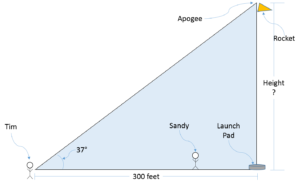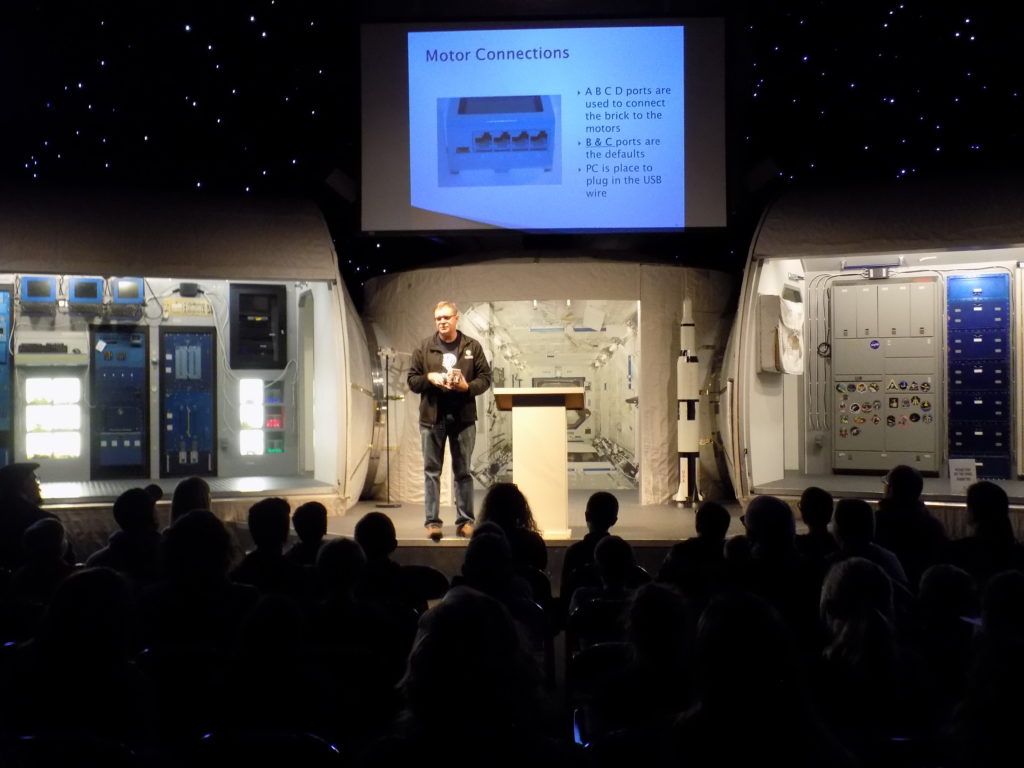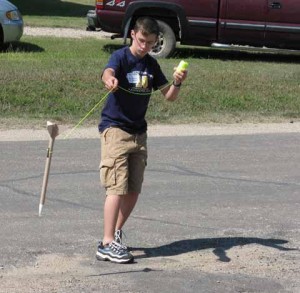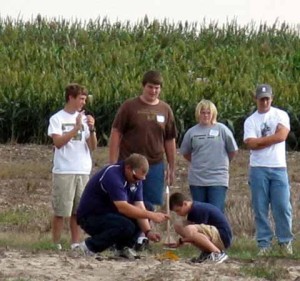This is a quick crib sheet to help you as you build model rockets. There is much more to be found on the Internet. If you find a helpful link please share it in the comments section below.
To Convert Inches (in) to Centimeters (cm): (in) * 2.54 = (cm’s)
Example: 5 in * 2.54 = 12.7 cm
To Convert Feet (ft) to Meters (m): (ft) / 3.281 = (m)
Example: 7 ft / 3.281 = 2.1335 m
To Convert Meters (m) to Feet (ft): (m) * 3.281 = (ft)
Example: 30 m * 3.281 = 98.43 ft
Added 1-19-19, for a guide to build your own altitude tracker using a protractor review this guide we put together.
Updated 7-20-16, some of the links below have changed the content and no longer include the simple altitude calculation so we have added it below.
To calculate the height of a right triangle: tan(angle) * distance = height
(yes, use a calculator to find the tangent)
Example: tan(59°) * 100 feet = 166.43 feet
Example: Sandy is launching her rocket. Her cousin, Tim, is standing 300 feet away with a protractor when Sandy launches her rocket. The protractor angle reads 127° when the rocket reaches its highest point, known as apogee. Tim knows he needs to subtract 90° from the angle on the protractor to get the correct angle. How high did the rocket go?
tan(127° – 90°) * 300 feet = height 
Simplify
tan(37°) * 300 feet = height
Simplify
~0.75355 * 300 feet = height
Simplify
~226.07 feet = height
Sandy’s rocket flew about 226.07 feet in the air. (We round off the extra digits after .07)
Finding a side in a right-angled triangle
https://www.mathsisfun.com/algebra/trig-finding-side-right-triangle.html
How to measure model rocket altitude
http://www.hobbizine.com/rocketaltitude.html
Rocket Center of pressure calculator
http://physics.gallaudet.edu/tools/rocketcop.html
Rocket Altitude Calculator
http://www.unm.edu/~tbeach/flashstuff/RocketAltitudeFixedSize.html
Determine Maximum Altitude
http://exploration.grc.nasa.gov/education/rocket/rkthowhi.html
OpenRocket Model Rocket Simulator – Freeware
http://openrocket.sourceforge.net/
Altitude Tracking
http://quest.arc.nasa.gov/space/teachers/rockets/act9.html
Flight Simulator Programs (List of different software)
http://www.thrustcurve.org/simulators.shtml
 Thank you to everyone who was able to Join us at the SpaceTech Robotics experience at the Kansas Cosmosphere. We hope everyone had a great time at the event. Photos from the event are available through the online gallery once you have requested a login. You can request one by using the contact form for the website. Videos taken will be posted at a later time as they require additional processing.
Thank you to everyone who was able to Join us at the SpaceTech Robotics experience at the Kansas Cosmosphere. We hope everyone had a great time at the event. Photos from the event are available through the online gallery once you have requested a login. You can request one by using the contact form for the website. Videos taken will be posted at a later time as they require additional processing.




Recent Comments